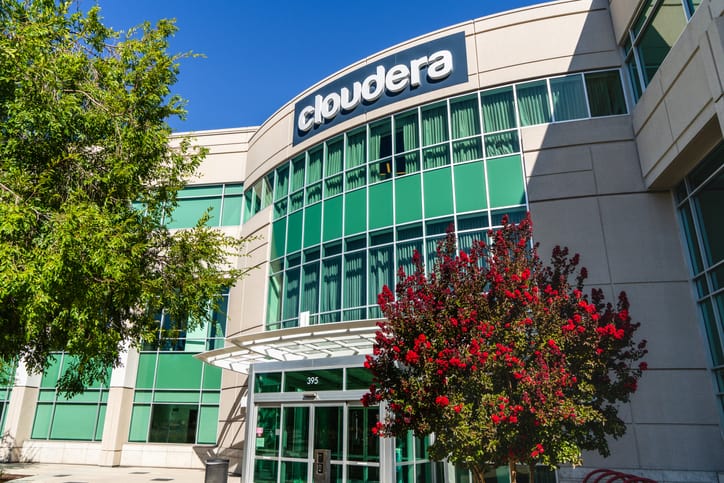Blog
Reflections on Cloudera Now and the Battle for Data Platform Supremacy | Blog

The enterprise data market is going through a pretty significant category revision, with native technology vendors – like Cloudera, Databricks, and Snowflake – evolving, cloud hyperscalers increasingly driving enterprises’ digital transformation mandates, and incumbent vendors trying to remain relevant (e.g., the 2019 HPE-MapR deal.) This revision has led to leadership changes, acquisitions, and interesting ecosystem partnerships. Is data warehousing the new enterprise data cloud category that will eventually be a part of the cloud-first narrative?
Last month I attended Cloudera Now, Cloudera’s client and analyst event. Read on for my key takeaways from the event and let me know what you think.
- Diversity and data literacy come to the forefront: Props to Cloudera for addressing key issues up front. In the first session, CEO Rob Bearden and activist and historian Dr. Mary Frances Berry had an honest dialogue about diversity and inclusion in tech. More often than not, tech vendors pay lip service to these issues of the zeitgeist, so it was a refreshing change to see the event kicking off with this important conversation. During the analyst breakout, Rob also took questions on data literacy and how crucial it is going to be as Cloudera aims to become more meaningful to enterprise business users against the backdrop of data democratization.
- Cloudera seems to be turning around, slowly: After a tumultuous period following its merger with Hortonworks in early 2019, Cloudera has new, yet familiar, leaders in place, with Rob Bearden (previously CEO of Hortonworks) taking over the CEO reins in January 2020. The company reported its FYQ2 2021 results a few weeks before the event, and its revenue increased 9 percent over the previous quarter, its subscription revenue was up 17 percent, and its Annualized Recurring Revenue (ARR) grew 12 percent year-over-year. ARR is going to be really key for Cloudera to showcase stickiness and client retention. While its losses narrowed in FYQ2 2021, it has more ground to cover on profitability.
- Streaming and ML will be key bets: As the core data warehousing platform market faces more competition, it is important for Cloudera to de-risk its portfolio by expanding revenue from emerging high growth spend areas. It was good to see streaming and Machine Learning (ML) products growing faster than the company. In early October, it also announced its acquisition of Eventador, a provider of cloud-native services for enterprise-grade stream processing, to further augment and accelerate its own streaming platform, named DataFlow. The aim is to bring this all together through Shared Data Experience (SDX), is Cloudera’s integrated offering for security and governance.
- We are all living in the hyperscaler economy: Not surprisingly, there were a share of discussions around the increasing role of the cloud hyperscalers in the data ecosystem. The hyperscalers’ appetite is voracious; while the likes of Cloudera will partner with these cloud vendors, competition will increase, especially on industry-specific use cases. Will one of the hyperscalers acquire a data warehousing vendor? One can only speculate.
- Industry-specificity will drive the next wave of the platform growth story: I’ve been saying this for a while – clients don’t buy tools, they buy solutions. Industry-context is becoming increasingly important, especially in more regulated and complex industries. For example, after its recent Vlocity acquisition, Salesforce announced Salesforce Industries to expand its industry product portfolio, providing purpose-built apps with industry-specific data models and pre-built business processes. Similarly, Google Cloud has ramped up its industry solutions team by hiring a slew of senior leaders from SAP and the industry. For the data vendors, focusing on high impact industry-led use cases – on their own and with partners – will be key to unlocking value for clients and driving differentiation. Cloudera showcased some interesting use cases for healthcare and life sciences, financial services, and consumer goods. Building a long-term product roadmap here will be crucial.
By happenstance, the Cloudera event started the same day its primary competitor, cloud-based data warehousing vendor Snowflake made its public market debut and more than doubled on day one, making it the largest ever software IPO. Make of that what you will, but to me it is another sign of the validation of the data and analytics ecosystem. Watch this space for more.
I’d enjoy hearing your thoughts on this space. Please email me at: [email protected].
Full disclosure: Cloudera sent a thoughtful package ahead of the event, which included a few fine specimens from the vineyards in La Rioja. I can confirm I wasn’t sampling them while writing this.